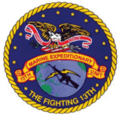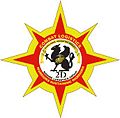This article needs additional citations for verification .(July 2025) |
A Marine expeditionary force (MEF), formerly known as a Marine amphibious force, is the largest type of a Marine air-ground task force. [1] A MEF is the principal building block of United States Marine Corps combat power. [2]
Contents
| NATO Map Symbol |
|---|
 |


























